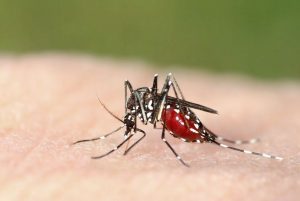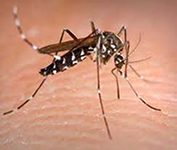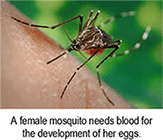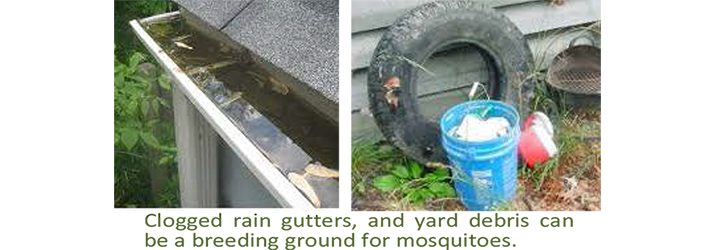Identification and Life Cycle
There are about 230 species of mosquitoes found in the United States, but the three most common species are Aedes albopicus, Culex pipens, and Anopheles quadrimaculatus. These flying and biting insects are in the order of Diptera (“two wings”), or flies.
The wings are narrow and have a fringe of scales on the margins and veins. They have three pairs of long, slender legs and two long antennae. Their long tubular mouthparts form an elongated beak for sucking up fluids.
Mosquitoes have four stages in their life cycle; egg, larva, pupa, and adult. The female mosquito lays her eggs usually at night, sticking them together one at a time to form a raft from 200 to 300 eggs on the surface of water. A raft of eggs look similar to a speck of floating soot. Once they hatch, they are in their larval phase for 7-14 days. They feed on organic debris and microorganisms in the water while molting their exoskeleton several times until they become pupae. The mosquitoes will stay in this phase for about two days until they exit their pupal skin and fly off once their wings are dry to find their first meal. The average life span is two weeks.






Comments are closed.